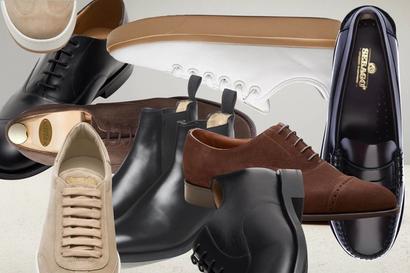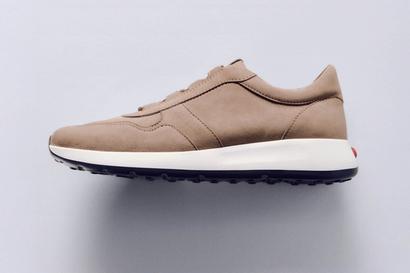

Wardrobe Heroes: The Ray-Ban Wayfarer
- Words: Holly Macnaghten
THE BEGINNING:
One of the most iconic sunglasses brands in the world, few have held such a celebrated place in culture and history as Ray-Ban. Founded by Bausch & Lomb in 1937, the first Ray-Ban sunglasses were made for the U.S. Army Air Corp, who were looking for a design to protect their pilots from the glare of the sun whilst flying. Broader popularity was garnered when, during WWII, General Douglas MacArthur was photographed in his Ray-Ban Aviator glasses landing on the beach in the Philippines. Thus the Ray-Ban ‘Aviator’ was born – its heroic status a symbol of classic American culture.
It was not long after the success of the Aviator that the style we now know of today as the Wayfarer swiftly followed suit. In 1952, Ray-Ban broke away from traditional metal frames and created the hard plastic frame, The Ray-Ban Wayfarer, a revolutionary advancement from earlier sunglass styles. With the newly available plastic moulding technology of this decade, Ray-Ban became one of the first companies to ditch metal-framed sunglasses and employ this new material to its design advantage. They have been dubbed the best selling sunglasses of all time and since its introduction in the 50s, the Wayfarer style has been adopted by countless designers ever since. No other brand styles, however, can be more aligned with pop culture than Ray-Ban’s Wayfarer sunglasses designed by Bausch & Lomb’s optical designer Raymond Stegeman.
THE REBELLION:
Now considered a radical moment in eyewear design, the Wayfarer quickly garnered popularity among both the fringe and the well-heeled, seamlessly crossing cultural and socio-economic borders that few before had ever managed to achieve.
Similarly to its predecessor, the Aviator, the Wayfarer was originally designed and marketed as sunglasses for pilots, but there was something about the style of these glasses that captured the imagination of the masses who were looking for something to add a touch of rebellion to their look. Design critic, Stephen Bayley states that the “distinctive trapezoidal frame spoke a nonverbal language that hinted at unstable dangerousness”. It was this gestural rebellion that so appealed to stars of the 60s from both music and film. From iconic rebels such as James Dean and Andy Warhol to style icon and much beloved U.S. President John F. Kennedy all wearing the frames during the 60s, it was this cultural crossover that lead to such widespread appeal.
During the 1970s the Wayfarer experienced a brief demise when the round lenses of John Lennon took the front seat in desired sunglass designs. Despite almost being discontinued altogether after this downward turn, Ray-Ban managed to secure a deal in 1982 with Unique Product Placement of Burbank, California, which placed Ray-Bans in movies and television programmes and promptly reignited their popularity – these were the years of The Blues Brothers and Risky Business. They rose to further popularity again through the idolisation of key members of the music industry, with musicians such as Debbie Harry and Morrissey wearing them with the style and panache that only the wearer of such a lens will understand. They stood for rock and roll, they stood for rebellion and they oozed cool factor.
THE REBELS:
It goes without saying that Ray-Ban has left an ineradicable mark on cultural history. Throughout the 50s and 60s, Ray-Ban Wayfarers were the frames of choice for everyone from Bob Dylan to Andy Warhol, James Dean, Marilyn Monroe, Roy Orbison, John Lennon and endless teenagers across the globe who wanted to look as cool and rebellious as their idols.
Ray-Ban was, and still is, one of the must-have brands in film. The Ray-Ban Wayfarer took pride of place on the stars of The Blues Brothers (1980), Risky Business (1983) and Top Gun (1986). In music, Michael Jackson donned a pair of Ray-Ban Wayfarers for his legendary Bad tour, which ran from 1987 to 1989 and became the highest-attended tour in history.
From Presidents to movie stars, rock stars to artists, fashion designers to runway models, there’s not a generation or cultural group who hasn’t, at some point, bestowed a pair of these legendary sunglasses.
5 OF OUR FAVOURITES…
1. RAY-BAN 2180 ROUND-FRAME ACETATE SUNGLASSES BLACK
Cult eyewear brand Ray-Ban offer a stylish round-frame option with these black acetate sunglasses. The slightly winged temples cast a nod to mid-century design and the sleek shape keeps the effect up to date. Handmade in Italy with minimalist detailing, they will become a firm fixture of your warm-weather roster.
£125.00 – thegentlemansjournal.co.uk
2. RAY-BAN CLUBMASTER ACETATE AND METAL SUNGLASSES TORTOISESHELL ONE SIZE
From intellectuals to cultural icons, Ray-Ban’s classic ‘Clubmaster’ sunglasses have been a popular choice among stylish men for decades thanks to their timeless design. This version contrasts tortoiseshell against gold-tone metal for a distinguished look. Wear them with a white T-shirt and jeans to achieve classic masculine cool.
£125.00 – thegentlemansjournal.co.uk
3. RAY-BAN ORIGINAL WAYFARER ACETATE SUNGLASSES BROWN
Ray-Ban’s wayfarer sunglasses are modern icons. Made famous by Mr James Dean in the 1950s, this sturdy pair has been handmade in Italy according to the label’s precise standards. The polished tortoise-shell acetate and brown lenses will add classic elegance to any look.
£125.00 – thegentlemansjournal.com
4. RAY-BAN ORIGINAL WAYFARER SUNGLASSES BLACK
Introduced in 1952, Ray-Ban’s black Wayfarer sunglasses are an iconic eyewear choice. Synonymous with a rock ‘n’ roll aesthetic, they just don’t seem to date. Wear this classic size with everything from winter knits to lightweight summer layers to give every look raffish appeal.
£120.00 – thegentlemansjournal.co.uk
5. RAY-BAN SIGNET METAL SUNGLASSES GOLD ONE SIZE
Inspired by retro designs, Ray-Ban’s ‘Signet’ sunglasses are constructed from ridged gold-tone metal with a double brow bar and cat-eyed corners. Offering full UV protection, the green lenses are crafted into a rounded oval that will suit almost all face shapes.
£125.00 – thegentlemansjournal.co.uk


